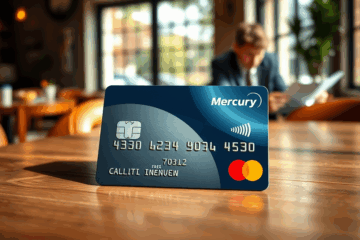Credit Card with Miles or Cashback Which Is Better
Miles Cashback options have become increasingly popular among consumers looking to maximize their rewards.
When choosing between credit cards that offer these rewards, it’s essential to delve into your personal spending habits and lifestyle preferences.
This article will explore the advantages of miles for frequent travelers and the simplicity and flexibility of cash back rewards.
By examining how these options align with everyday spending and travel expenses, you will be better equipped to make an informed decision on the right card for your financial needs.
Miles vs Cashback: Core Differences
Credit card rewards come in two popular forms: miles rewards and cashback benefits.
Understanding how each operates can help you make more informed spending decisions.
Key appeal of miles rewards lies in offering frequent travelers opportunities to earn redeemable points for flights, hotel stays, or travel-related expenses.
These points often accumulate with every dollar spent, potentially unlocking airport lounge access and travel insurance, which amplify their overall value.
A combination of these benefits can elevate one’s travel experience from economy to first class, whether by providing cost-cutting benefits or luxury enhancements.
“Miles open doors to premium cabins.” — Financial Expert
Simplicity of Cashback Cards
Cashback credit cards offer users a straightforward and effective way to save money on everyday purchases, making them appealing for those who value simplicity and convenience.
Without the complications of travel rewards or loyalty points, these cards provide an immediate and direct savings benefit each time you use them.
Typically, cashback is calculated as a percentage of the amount you spend, allowing for flexible redemption of the earned cash rewards.
For example, Bank of America offers up to 3% cashback on certain categories, enhancing savings on frequent expenditures.
To illustrate the variety of cashback options, consider this compact table:
| Category | Cashback |
|---|---|
| Groceries | 3% |
| Gas | 2% |
| Dining | 3% |
Cashback offers like these enable users to effortlessly accumulate savings over time.
Redemption is straightforward: you can apply the cashback directly to your balance, deposit it into your bank account, or even receive a check.
The Relevant text to this approach is its no-nonsense nature, making it ideal for those seeking financial benefits without added complexity.
Matching Rewards to Lifestyle
Understanding how consumer profiles match with rewards types can help in maximizing credit card benefits.
For a frequent traveler, who spends heavily on flights and hotels, choosing a miles card can provide relevant perks that align with travel lifestyles.
This consumer highly values upgrades and benefits like lounge access, priority boarding, or free checked luggage.
As certain miles cards offer a higher value when redeeming for travel, these cards become highly appealing to frequent flyers.
In contrast, an everyday spender benefits significantly from having a cashback card.
These individuals seek uncomplicated savings on routine purchases like groceries, gas, and dining out.
Cash back rewards are straightforward and instantly apply to reduce expenses, making them a great fit for someone prioritizing flexibility and simplicity.
- Frequent traveler: spends heavily on flights and hotels, values upgrades.
- Everyday spender: seeks uncomplicated savings on routine purchases.
Studies indicate a growing preference for cash back options, reported by The Financial Brand, noting 58% of cardholders prefer them for their simplicity and immediate benefit.
As each profile varies in how spending occurs, correctly aligning these factors ensures one gains the most value from credit card rewards.
Optimizing Your Reward Strategy
To effectively maximize your credit card rewards, a strategic approach to spending is crucial.
By aligning your purchases with your card’s rewards categories, you can accumulate points or miles more efficiently.
For example, if your card offers bonus points on dining, consider using it for all restaurant expenses.
This approach ensures you exploit category bonuses to their fullest extent, driving up your rewards potential without increasing overall spending.
Strategic spending also involves understanding and leveraging category bonus management smartly.
As highlighted by The Points Guy, rotating cards based on their current bonus categories can yield substantial gains, and setting up alerts for category changes helps maintain an optimal strategy.
In terms of redemption timing, planning can significantly enhance your benefits.
This involves monitoring the value of points or miles and waiting for opportune redemption moments, such as flash sales or peak travel seasons, to amplify the value of your accumulated rewards.
The key is to be flexible and patient, thus ensuring that when you redeem, you’re getting the most out of your hard-earned rewards.
By integrating these strategies into your routine, you can optimize your rewards efficiently and effectively.
Evaluating Reward Value for Your Goals
To choose the right rewards card, it’s essential to balance your lifestyle with your financial goals.
Frequent travelers might find the value of a miles reward card by redeeming points for flights or upgrades, offering significant savings on travel expenses.
However, if travel isn’t a regular part of your routine, you might appreciate the flexibility and straightforwardness of a cashback card.
Consider your redemption preferences as well.
Some people enjoy the strategic nature of maximizing miles for luxury travel experiences, while others prefer the simplicity of cashback rewards deposited directly into their accounts.
For those who view travel as a necessity rather than a luxury, the simplicity of a cashback reward system might be more appealing.
Additionally, think about your fee tolerance.
Miles cards often come with annual fees, which can be worth it if you fully leverage the travel perks.
Cashback cards often have no fees, making them a cost-effective choice for everyday purchases.
As you navigate your options, remember that Forbes’ Credit Card Guide can provide valuable insights.
Ultimately, focus on personalized decision making to find the card that fits your needs.
In conclusion, choosing between miles and cash back ultimately depends on your unique spending patterns.
Assessing your travel frequency and everyday expenses will guide you in selecting the best credit card that maximizes your rewards and complements your lifestyle.



0 Comments